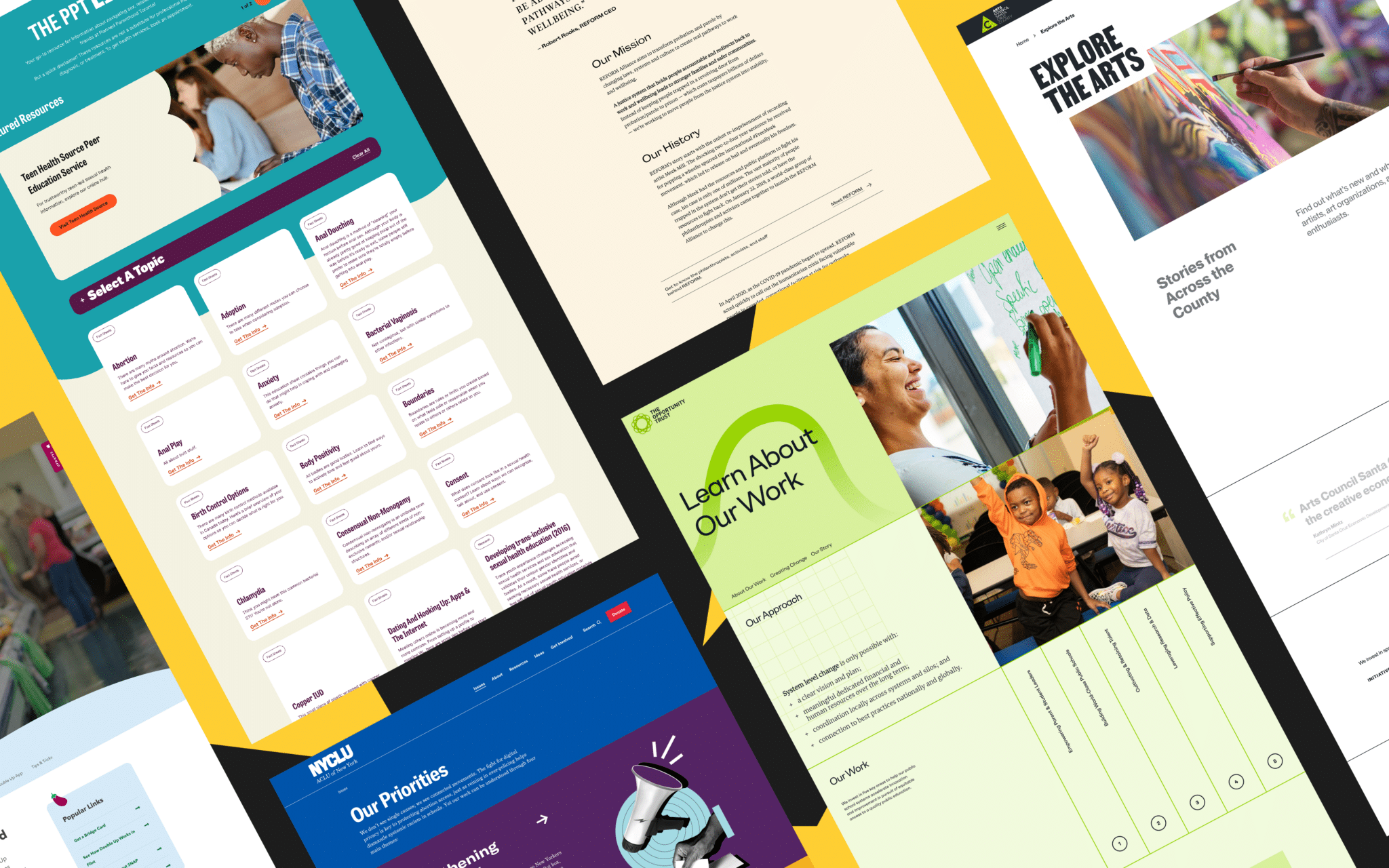Who Is The Best Web Designer Nearby: Efficient Web Development Enhances Online Existence
Interface (UI) and User Experience (UX) Style: The Heart of Website Style
Ever landed on a site that felt like navigating a labyrinth blindfolded? That's a UI/UX design failure. Site style isn't almost aesthetic appeals; it has to do with crafting an instinctive and enjoyable journey for your visitors.
What's the Distinction, Anyhow?
UI and UX are frequently used interchangeably, however they're distinct. Think about it in this manner: UI is the saddle, stirrups, and reins of a horse-- the tangible components. UX is the sensation of riding that horse-- the overall experience. A stunning saddle (UI) won't matter if the horse throws you off (bad UX)
Key Elements of a Terrific UI
- User-friendly Navigation: Can users easily find what they're looking for? A clear menu structure is paramount.
- Visual Hierarchy: What should users see? Usage size, color, and positioning to guide their eyes.
- Ease of access: Is your site usable for everybody, consisting of those with impairments? Consider color contrast, alt text for images, and keyboard navigation.
- Consistency: Maintain a constant look throughout your site. This develops trust and lowers confusion.

Crafting a Compelling UX
User experience style is everything about understanding your audience. What are their goals? What are their discomfort points? What thrills them? It has to do with empathy, research, and iterative enhancement.
UX Best Practices:
- User Research Study: Conduct studies, interviews, and use testing to understand your target market.
- Personas: Produce fictional representations of your ideal users to direct your design choices.
- Details Architecture: Arrange your material in a logical and instinctive method.
- Functionality Screening: Observe users communicating with your website to identify areas for improvement.
The ROI of Great UI/UX
Purchasing UI/UX style isn't practically making your site appearance quite. It has to do with driving conversions, increasing client complete satisfaction, and building brand commitment. A well-designed site can be an effective tool for accomplishing your service objectives. Keep in mind that time when Apple redesigned their site? Sales soared, and the rest is history. Can you imagine what a distinction it could produce you?
Avoid Common Pitfalls
Sluggish packing times, chaotic designs, and confusing navigation are UX killers. Don't let these errors undermine your site's success. Focus on speed, simpleness, and clarity.
Eventually, fantastic UI/UX design is about developing a site that is both stunning and practical. It's about putting the user first and understanding their requirements. When you get it right, the benefits are well worth read more the effort.
Information Architecture: The Plan of Your Site
Ever felt utterly lost navigating a website, clicking aimlessly wanting to stumble upon that evasive piece of info? That's a failure of information architecture (IA). Consider IA as the structural skeleton of your site, the invisible structure that determines how material is arranged and identified. It's not practically aesthetics; it's about usability, guaranteeing visitors can easily find what they need. Why is this crucial? Because a baffled visitor is a lost client. And a lost client is bad for company.
Crafting a Smooth Navigation Experience
Navigation design is the user interface manifestation of your IA. It's the menus, breadcrumbs, and search bars that direct users through your website. A properly designed navigation system need to be intuitive, predictable, and efficient. Consider this: the less clicks it takes for a user to discover what they're searching for, the better. But what occurs when your website grows, building up pages and content like dust bunnies under the sofa?
Common Troubles and Specialist Solutions
One of the greatest difficulties in IA is managing complexity as your website broadens. All of a sudden, your carefully prepared structure seems like a tangled mess of spaghetti. This typically results in "click fatigue," where users abandon their search due to disappointment. How do you avoid this? A key strategy is routine content audits. Ruthlessly prune out-of-date or irrelevant material. Combine comparable pages. Re-evaluate your labeling system. Believe about how users really search for details, not just how you believe they search.
- Card Arranging: A user-centered design strategy where individuals arrange subjects into categories that make good sense to them. This reveals valuable insights into how your target audience perceives and categorizes information.
- Tree Screening: Assesses the findability of subjects within your website's hierarchy. Individuals are given tasks and asked to browse the existing (or proposed) structure to locate the responses.
- User Streams: Mapping out the actions a user requires to complete a particular task on your website. This assists recognize prospective bottlenecks and locations for improvement in your navigation.
Another overlooked aspect is mobile-first IA. What deal with a desktop does not constantly translate well to a smaller sized screen. Focus on necessary material and streamline navigation for mobile users. Think about using a hamburger menu or a bottom navigation bar for simple access to crucial sections.
Welcome the power of internal linking. Tactically link related material within your website. This not only enhances SEO however likewise motivates users to explore even more, increasing engagement and time on site. Consider your site as a network of interconnected concepts, not just a collection of separated pages.
Let's not forget the importance of a robust search performance. A well-implemented search bar can be a lifesaver for users who can't discover what they need through standard navigation. Ensure your search function is accurate, quickly, and offers relevant outcomes. Implement features like autocomplete and suggested searches to further improve the user experience.
Web Content Strategy and Development: The Heart of Website Style
Ever discover yourself gazing at a blinking cursor, a blank page mocking your best objectives for a killer site? It's a familiar scene. An amazing style can draw visitors in, but what keeps them there? The answer, my good friend, is engaging material. It's the bedrock upon which effective sites are constructed. Consider it the soul of your digital existence.
Crafting a Content Technique
Web material method is more than just article and item descriptions; it's a meticulously prepared roadmap guiding your audience through a carefully curated experience. Believe of it as the architect's blueprint, ensuring that every component operates in consistency to accomplish your objectives.
- Define Your Audience: Who are you trying to reach? What are their needs, wants, and aspirations? Knowing your audience is vital.
- Establish Clear Goals: What do you want your website to attain? Are you seeking to produce leads, drive sales, or build brand awareness?
- Conduct Keyword Research: What terms and expressions are your target market using to discover details online? Understanding keyword research is essential for SEO.
- Develop a Content Calendar: Strategy your content development and publishing schedule in advance. Consistency is essential.
The Art of Web Material Development
It's time to roll up your sleeves and start writing. But not simply any writing. We're discussing content that captivates, informs, and inspires action.
However here's the rub: Developing genuinely appealing web material isn't constantly easy. The common mistake? A detach between the intended message and how it's actually received. It's like trying to fit a square peg into a round hole. The service? Compassion. Step into your audience's shoes. What are their hesitations? What information do they need to decide? Address these issues head-on, and you'll be well on your way to developing material that resonates.
Remember, sites aren't brochures; they're dynamic, interactive platforms. Usage visuals, videos, and interactive elements to keep your audience engaged. Break up large blocks of text with headings, subheadings, and bullet points. Make your content scannable and easy to absorb.
SEO Considerations: Making Your Material Discoverable
Producing fantastic content is just half the fight. You also need to ensure that individuals can find it. That's where SEO is available in.
- Use pertinent keywords throughout your content.
- Optimize your title tags and meta descriptions.
- Build top quality backlinks from other sites.
- Guarantee your site is mobile-friendly.
Here's a professional pointer: Don't simply things keywords into your content. Focus on developing important, helpful material that people actually want to read. Online search engine are getting smarter, and they're fulfilling websites that focus on user experience.
The Ever-Evolving Landscape
Web material strategy and production is an ongoing process, not a one-time event. The digital landscape is continuously developing, so it is essential to remain up-to-date on the current trends and best practices. Routinely analyze your site's performance and make adjustments to your material method as needed.
Visual Style and Branding Elements
A website's visual design is more than just window dressing; it's the digital handshake that forms a very first impression. It has to do with crafting an experience that resonates with your audience, weaving your brand's DNA into every pixel. Believe of it as visual storytelling. What story are you telling? Is it one of trust and reliability, or development and enjoyment? The branding elements you use are the ink and paper of this story.
Color Psychology: More Than Simply Pretty Hues
Ever question why a lot of banks use blue? Color stimulates emotion. It's not simply about visual appeals; it has to do with psychology. Red can shout seriousness, while green whispers development and harmony. Consider your target group. What colors resonate with them? What feelings do you want to stimulate? Do not simply pick a color you like; pick a color that works.
One common error I see is overlooking ease of access. Is your color scheme readable for those with visual impairments? Tools like color contrast checkers are your pals here. A visually spectacular site design is useless if it excludes a part of your audience.
Typography: Your Brand name's Voice
Font styles aren't simply font styles. They're voices. A spirited script can communicate whimsy, while a vibrant sans-serif can project confidence. Are you using a font that's legible throughout various devices and screen sizes? A lovely font style is squandered if it's a strain to read. And, for the love of all that is holy, limit the number of fonts you use. A cacophony of typefaces is a visual headache.
Images: An Image is Worth a Thousand Clicks
Stock photos have their place, but authentic images can be gold. Original photography or illustrations can set you apart. Showcasing your group, your products in action, or your distinct procedure adds a layer of authenticity that stock images merely can't replicate. But be careful the pitfalls! Are your images enhanced for web use? Large images can maim your site's loading speed, sending out visitors getting away. Do your images align with your brand's message and values? A mismatched image can create harshness and puzzle your audience.
- Make sure images are high-quality however enhanced for web use (compressed)
- Use alt text for all images, both for availability and SEO.
- Consider utilizing a consistent style for your images (e.g., black and white, vintage filter)
The Consistency Quandary
Picture a brand that uses a various logo on every page, a various color pattern on every section, and a various font on every heading. Complicated? Consistency is crucial. Your brand needs to be instantly recognizable, no matter where somebody experiences it online. Utilize a style guide to record your brand's visual elements and guarantee that everybody on your team is on the very same page. It's a small investment that pays dividends in brand recognition and trust.
One aspect often ignored is the favicon. It's the small icon in the web browser tab. A properly designed favicon enhances your brand identity and makes your site much easier to find among a sea of open tabs. It's the little details that make a huge impact.
 Ben Savage Then & Now!
Ben Savage Then & Now! Molly Ringwald Then & Now!
Molly Ringwald Then & Now! Marla Sokoloff Then & Now!
Marla Sokoloff Then & Now! Michelle Trachtenberg Then & Now!
Michelle Trachtenberg Then & Now! Batista Then & Now!
Batista Then & Now!